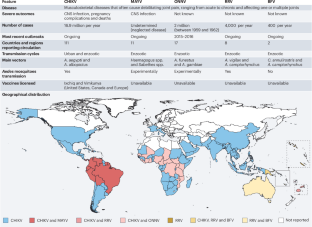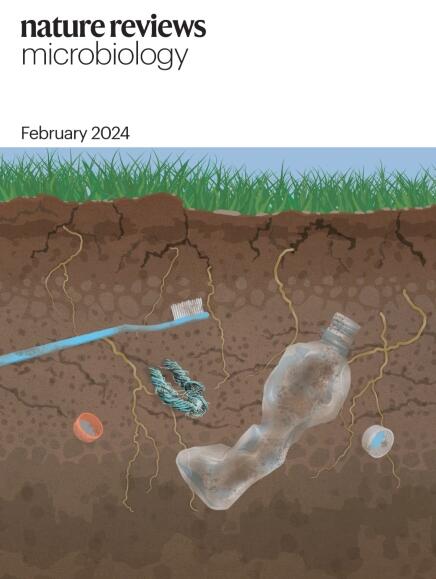Chikungunya virus and other emerging arthritogenic alphaviruses
IF 103.3
1区 生物学
Q1 MICROBIOLOGY
引用次数: 0
Abstract
Arthritogenic alphaviruses are arboviruses (arthropod-borne viruses) that are genetically and serologically related positive-strand RNA viruses and cause epidemics on a global scale. They are transmitted by mosquitoes and cause diseases in humans that are mainly characterized by fever and often debilitating, sometimes chronic polyarthralgia. At present, approved treatments or vaccines are not available for most arthritogenic alphaviruses, and recently licensed vaccines against chikungunya virus are awaiting implementation in endemic areas. Most arthritogenic alphaviruses are currently limited to specific geographic areas due to vector distributions and availability of amplifying hosts, but they pose a substantial risk of emergence in other regions. The exception is chikungunya virus, which has emerged repeatedly from Africa, established sustained and efficient transmission in urban areas (including in temperate climates) and has caused major epidemics across the world. In this Review, we highlight recent advances in our understanding of the transmission cycles of arthritogenic alphaviruses, their vectors, epidemiology, transmission dynamics, evolution, pathophysiology and immune responses. We also outline strategies and countermeasures to anticipate and mitigate the impact of arthritogenic alphaviruses on human health. In this Review, Weaver and colleagues discuss the transmission cycles of arthritogenic alphaviruses, their vectors, epidemiology, transmission dynamics, evolution, pathophysiology and immune responses. They also outline strategies and countermeasures to anticipate and mitigate the impact of arthritogenic alphaviruses on human health.


基孔肯雅病毒和其他新出现的致关节炎的甲病毒
关节炎源性甲病毒是虫媒病毒(节肢动物传播的病毒),是遗传和血清学相关的正链RNA病毒,在全球范围内引起流行。它们通过蚊子传播,在人类中引起疾病,主要表现为发烧和常常使人虚弱,有时是慢性多关节痛。目前,大多数关节炎源性甲病毒没有获得批准的治疗方法或疫苗,最近获得许可的基孔肯雅病毒疫苗正在流行地区等待实施。由于病媒分布和扩增宿主的可用性,大多数关节炎源性甲病毒目前仅限于特定地理区域,但它们在其他区域出现的风险很大。唯一的例外是基孔肯雅病毒,它在非洲反复出现,在城市地区(包括温带气候地区)建立了持续和有效的传播,并在世界各地造成了重大流行病。在这篇综述中,我们重点介绍了最近在了解关节炎源性甲病毒的传播周期、媒介、流行病学、传播动力学、进化、病理生理和免疫反应方面的进展。我们还概述了预测和减轻关节炎性甲病毒对人类健康影响的策略和对策。
本文章由计算机程序翻译,如有差异,请以英文原文为准。
求助全文
约1分钟内获得全文
求助全文
来源期刊

Nature Reviews Microbiology
生物-微生物学
CiteScore
74.00
自引率
0.50%
发文量
149
审稿时长
6-12 weeks
期刊介绍:
At Nature Reviews Microbiology, our goal is to become the leading source of reviews and commentaries for the scientific community we cater to. We are dedicated to publishing articles that are not only authoritative but also easily accessible, supplementing them with clear and concise figures, tables, and other visual aids. Our objective is to offer an unparalleled service to authors, referees, and readers, and we continuously strive to maximize the usefulness and impact of each article we publish. With a focus on Reviews, Perspectives, and Comments spanning the entire field of microbiology, our wide scope ensures that the work we feature reaches the widest possible audience.
 求助内容:
求助内容: 应助结果提醒方式:
应助结果提醒方式:


